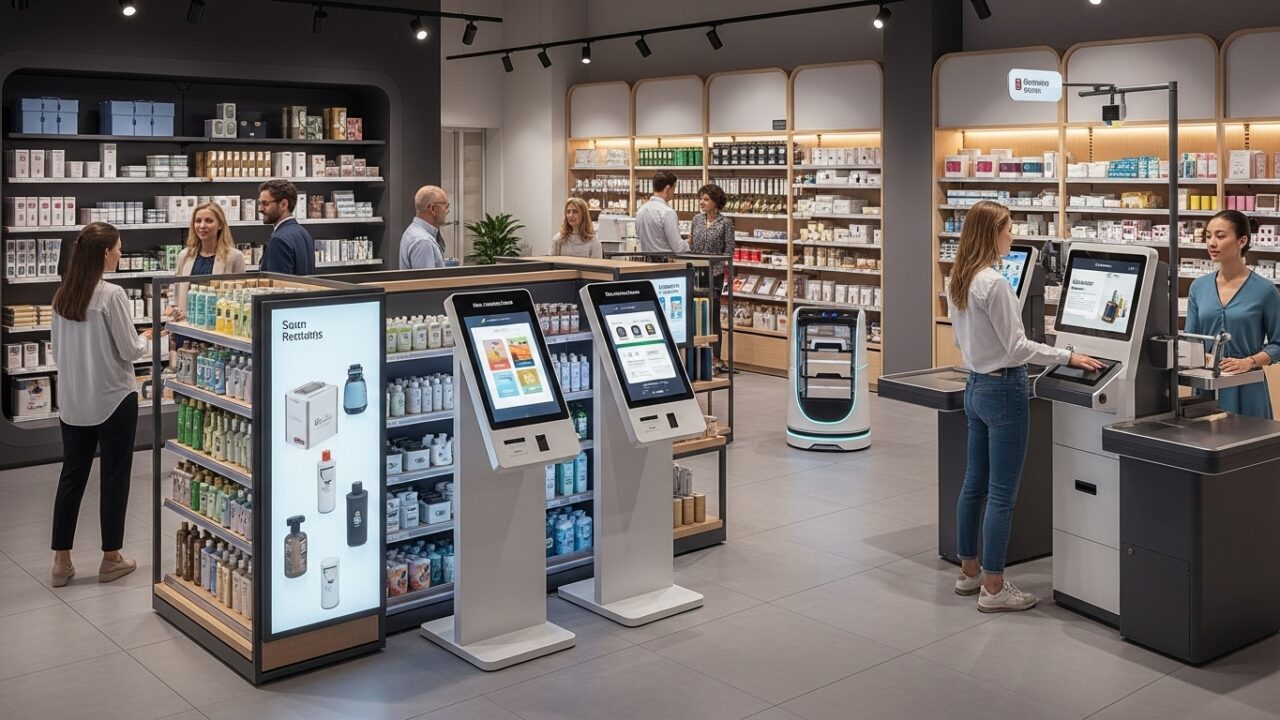
Unleashing the Power of Customer Experience Service
Customer experience is often the key differentiator between companies that thrive and those that merely survive. Providing an excellent customer experience backed by great customer support is no longer an option – it is a necessity. However, many organizations struggle with how to unleash the power of a great customer experience and use it as a catalyst for growth.
Understanding The Importance of Customer Experience Service
The customer experience encompasses every interaction a customer has with a business across all channels and touch points—from the initial awareness of a brand to post-purchase service and advocacy. Customer service plays a critical role in this broader journey toward a positive customer experience. As frontline representatives interfacing directly with customers, service teams can make or break perceptions of a brand by either delivering service excellence or falling short.
Providing excellent customer service is essential for shaping positive experiences throughout the entire customer journey. An effective customer service team can turn dissatisfied buyers into loyal advocates. Conversely, poor service interactions will negatively impact customer loyalty. By providing a remarkable customer experience, brands can differentiate themselves and drive growth through improved advocacy and customer loyalty. In this way, customer service lies at the heart of a sound customer experience strategy.
Customer Experience Versus Customer Service
The customer experience journey spans all interactions a customer has with a business throughout their relationship. This encompasses awareness, research, purchasing, onboarding, account management, service requests, community engagement, and advocacy across all channels and touch points. While many teams impact the customer experience, customer service teams are on the frontlines, directly interacting with and assisting customers daily to gain actionable customer feedback.
Customer service refers specifically to the interactions between customer service representatives and customers via channels like phone, email, chat, social media, and self-service portals. It is a critical subset of the broader customer experience. Service interactions shape a customer’s emotional perceptions of a brand. By providing excellent customer service, companies can directly enrich the customer experience journey, fueling loyalty and advocacy.
The Role of Customer Service in Shaping Customer Experience
Customer service teams play a critical role in influencing the broader customer experience. This is because service interactions are often high-emotion, problem-solving moments that create lasting impressions.
Good service and a positive experience can transform frustrated customers into happy, loyal brand advocates. Anything less than service excellence, on the other hand, can instantly sour customers, leading to negative word-of-mouth, defection, and damaged experiences. As frontline representatives, service teams create emotional connections between customers and a brand.
With the rise of social media, poor customer service interactions now risk going viral. This modern landscape makes providing excellent, empathetic service essential. More than ever, the service experience impacts brand perceptions and customer loyalty. By meeting and exceeding customer needs during these moments of truth, customer service reps have an opportunity to positively influence the end-to-end customer journey.
Best Practices for Enhancing Customer Experience
Personalizing the Customer Journey for Improved Experience
Personalization has become table stakes for delivering exceptional customer experiences in the modern digital era. By leveraging data and insights to understand each customer’s needs, preferences, and context, brands can create tailored journeys that resonate on an individual level. Personalized customer interactions—including product recommendations, tailored content, and contextual interactions—demonstrate relevance and thoughtfulness. This builds trust and emotional connections with customers, making experiences feel more authentic and human.
Companies that focus on mass personalization, hyper-individualization, and customer journey orchestration are seeing dramatic improvements in key metrics like satisfaction, loyalty, lifetime value, and advocacy. Personalized customer journeys connect brands and customers on a one-to-one level, creating the feel of a local business versus a giant corporation. Designing experiences around individual needs fundamentally shifts a brand’s relationship with its customers from transactional to meaningful. In this way, personalization represents a key strategy for profitably driving the customer experience transformation.
Utilization of Technology for Efficient Customer Experience
Technology plays a pivotal role in scaling excellent customer service across growing customer bases. AI and automation can optimize the service experience by improving efficiency, reducing wait times, and increasing issue resolution. Examples include chatbots for instant assistance and virtual agents that understand natural language.
Technologies like machine learning (ML) improve service by quickly analyzing customer data to surface relevant information and recommend best actions. Predictive analytics and sentiment analysis enable issue pre-emption. Integration of CRM data provides a 360-degree customer view for personalized service. Video chats enable anywhere, anytime connectivity, while emerging technologies like AR/VR also open new remote support capabilities.
When applied properly, technology enables brands to provide 24/7, omnichannel service that delights customers. The key is balancing human and digital touchpoints for optimal efficiency and experience.
Embracing the Feedback Culture: Turning Complaints into Opportunities
Negative feedback, when handled properly, provides invaluable opportunities to improve customer experiences and loyalty. Service teams should actively listen to customer issues, understand root causes, and quickly resolve systemic problems.
Effective strategies involve analyzing the voice of the customer data, journey mapping pain points, and monitoring CSAT surveys and social media complaints. This reveals insight into negative feedback patterns. Identifying recurring issues allows for targeted customer service team training, helping team members to quickly resolve these issues and improve brand perception when all is said and done.
Adopting a feedback mindset focused on continuous improvements in service and customer support enables brands to recognize pain points, systematically strengthen experiences, and build customer-centricity. Instead of dreading complaints, brands can view them as opportunities to create loyal promoters by addressing concerns better than the customer expected. This mindset can reframe negative feedback as a valuable tool for driving transformation rather than merely another headache.
The Future of Customer Experience Service: Predictions and Insights
Brands can elevate customer satisfaction, loyalty, and lifetime value by leveraging customer experience software to optimize interactions across channels, gather actionable feedback, and enable personalized service through automation and AI.
Role of Artificial Intelligence in Enhancing Customer Experience
AI is rapidly transforming customer experiences and service interactions by enabling greater personalization, predictive capabilities, and automation. Chatbots and virtual assistants now leverage natural language processing to understand customer questions and provide 24/7 self-service support. With the ability to interpret emotions like frustration in a customer’s voice, AI also allows companies to gain deeper insights and react appropriately during phone and digital interactions.
Additionally, machine learning algorithms analyze past data and behaviors to predict each individual’s needs, preferences, and likelihood of churn. This powers real-time recommendation engines for upselling and cross-selling, as well as targeted interventions to delight at-risk customers. Moving forward, generative AI could even create personalized content and responses tailored to customers’ unique contexts. As AI capabilities grow more sophisticated and human-like, they will open new frontiers in cultivating customer relationships through a balance of automation and human touch.
Omnichannel Service for Holistic Customer Experience
Delivering exceptional customer service requires taking an omnichannel approach. This means allowing customers to move seamlessly across all channels—including in-store retail, e-commerce, phone, email, live chat, social media, mobile apps, and self-service portals—while receiving consistent customer support. An omnichannel experience with integrated backend processes helps connect the dots of data and insights across every dimension of customer interaction.
By understanding a customer’s context and previous touch points at any given moment, agents can create a personalized, on-brand experience oriented around the individual rather than the siloed channel. Instead of frustrating customers by having to repeat information across channels, omnichannel experiences focus on continuity through convenient hand-offs and centralized knowledge bases. Streamlining operations in this way provides a more holistic, satisfying customer journey.
Making Customer Experience the Core of Your Business Strategy
Leading companies are building their enterprise strategies around customer experience (CX) by:
- Developing organization-wide customer journey expertise.
- Breaking down silos between departments to enable seamless, cohesive experiences.
- Tying CX metrics like Net Promoter Score and CSAT to executive compensation as a symbol of priority.
- Investing substantially in CX infrastructure across technology, data analytics, and staff training.
Having a solid customer experience strategy is emerging as a key competitive differentiator, driving brand loyalty. Firms must rally the entire organization around optimizing end-to-end journey interactions. This requires aligning leadership priorities, equipping staff with skills and resources, and implementing supportive systems technology-wide. By orchestrating the customer experience across teams and channels, companies can craft differentiated brand experiences that deliver great customer support and foster increased satisfaction and trust.








